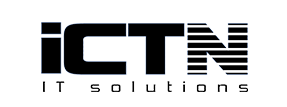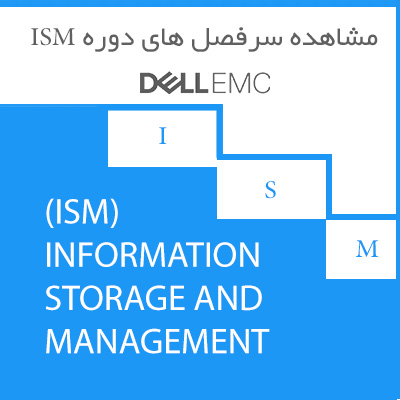مروری بر دوره
Information Storage and Management (ISM) is a unique course that provides a comprehensive understanding of the various storage infrastructure components in data center environments. The latest iteration of this popular course — ISM v3 (version 3) — enables participants to make informed decisions on storage-related technologies in increasingly complex IT environments, which are fast changing with the adoption of software-defined infrastructure management and third platform technologies (cloud, Big Data, social, and mobile technologies)
ISMv3 provides a strong understanding of storage technologies and prepares participants for advanced concepts, technologies, and processes. Participants will learn the architectures, features, and benefits of intelligent storage systems outlined the course module section below.
The ISMv3 course takes an open-approach to describe all the concepts and technologies, which are further illustrated and reinforced with EMC-related product examples
آنچه می آموزید
سرفصل ها
۱: Introduction to Information Storage
Digital data and its types
Information storage
Key characteristics of data center
Evolution of computing platforms
۲: Third Platform Technologies
Cloud computing and its essential characteristics
Cloud services and cloud deployment models
Big data analytics
Social networking and mobile computing
Characteristics of third platform infrastructure
Imperatives for third platform transformation
۳: Data Center Infrastructure
Building blocks of a data center
Compute systems and compute virtualization
Software-defined data center
۴: Intelligent Storage Systems
Components of an intelligent storage system
Components, addressing, and performance of hard disk drives and solid state drives
RAID
Types of intelligent storage systems
Scale-up and scale-out storage architecture
۵: Block-based Storage System
Components of block-based storage system
Storage provisioning and storage tiering
۶: File-based Storage System
Components and architecture of NAS
NAS file sharing methods
File-level virtualization and tiering
۷: Object-based and Unified Storage
Components of object-based storage device (OSD)
Key features of OSD
Storage and retrieval process in OSD system
Unified storage architecture
۸: Software-defined Storage
Attributes of software-defined storage
Architecture of software-defined storage
Functions of the control plane
Software-defined storage extensibility
۹: Fibre Channel SAN
Software-defined networking
FC SAN components and architecture
FC SAN topologies, link aggregation, and zoning
Virtualization in FC SAN environment
۱۰: Internet Protocol SAN
iSCSI protocol, network components, and connectivity
Link aggregation, switch aggregation, and VLAN
FCIP protocol, connectivity, and configuration
۱۱: Fibre Channel over Ethernet SAN
Components of FCoE SAN
FCoE SAN connectivity
Converged Enhanced Ethernet
FCoE architecture
۱۲: Introduction to Business Continuity
Impact of information unavailability
Business continuity planning lifecycle
Eliminating single points of failure
Application resiliency
۱۳: Backup and Archive
Backup architecture
Backup targets and methods
Data deduplication
Cloud-based and mobile device backup
Data archive
۱۴: Replication
Uses of replication and its characteristics
Compute-based, storage-based, and network-based replication
Data migration
Disaster Recovery as a Service (DRaaS)
۱۵: Securing the Storage Infrastructure
Information security goals
Storage security domains
Threats to a storage infrastructure
Security controls to protect a storage infrastructure
Governance, risk, and compliance
۱۶: Managing the Storage Infrastructure
Storage infrastructure management functions
Storage infrastructure management processes
مخاطبان این دوره
Computer systems and architectures
Networking technologies
Operating system
Database Management Systems

